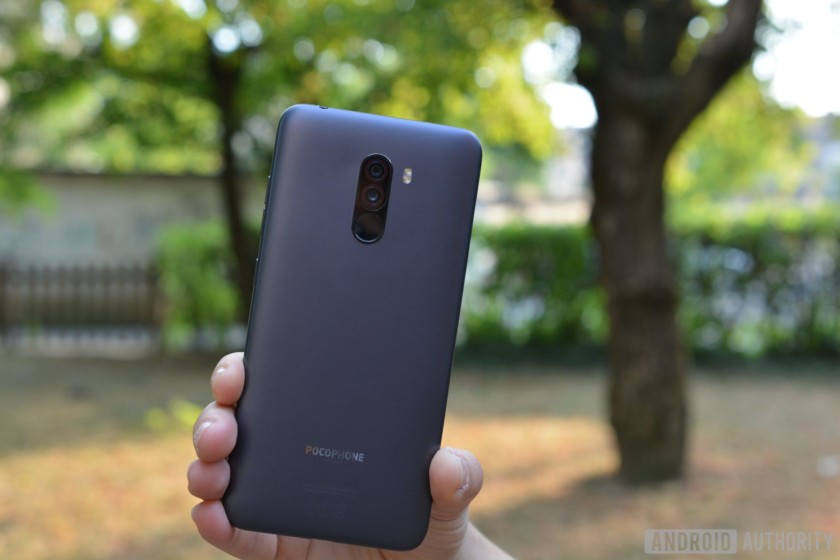It's tough to argue that you aren't getting plenty of bang for your buck when buying the Redmi K20 Pro. A lot of people have been disappointed by the phone's Indian price tag though, comparing it to the Chinese price and Pocophone F1's price.
The Redmi K20 Pro is about $100 more expensive than the Pocophone F1's ~$300 launch price, which is a pretty significant chunk for price-sensitive consumers. But as Xiaomi India outlined in its open letter, you're getting plenty of features for the added cost.
Redmi's first flagship delivers a number of features the Pocophone F1 lacked. These features include a triple rear camera setup, OLED screen with an in-display fingerprint sensor, pop-up selfie camera, glass back, and 27 watt fast charging.
Xiaomi India also used the open letter to note that it was still capping its net profit at five percent for the series, and that it wasn't going to sell its phones at a loss. This suggests that most of the $100 premium over the Pocophone F1 was devoted to added features rather than a bigger profit margin.
So if a Pocophone F2 is indeed coming later this year, it seems all but guaranteed that Xiaomi will drop a few features if it wants a similar price tag to the original model. But aside from the flagship power and chunky battery the Pocophone F1 was known for, what potential compromises could the company make in order to reach a more palatable price?
A less impressive camera setup
One of the more notable compromises made by the Pocophone F1 was its camera system, using a depth sensor as the secondary rear camera. This bucked the trend seen on other Xiaomi flagships in 2018, which was to use a more versatile (and likely more expensive) secondary camera such as a telephoto sensor.
We're now firmly in the age of triple rear cameras, but Xiaomi could conceivably stick to a dual rear camera setup for a Pocophone F2. The firm could either stay with a secondary depth sensor or offer a more versatile secondary camera.
We've also seen a trend for budget triple camera phones to offer a depth sensor instead of a telephoto camera (keeping the ultra-wide camera), so this is another option for Xiaomi if it wants a triple rear shooter arrangement. In fact, the newly announced Mi A3 offers this exact setup.
A cheaper screen
The Pocophone F1 also differed from other Xiaomi flagships in 2018 by virtue of its LCD screen, while the Mi 8 series and Mi Mix 3 offered an OLED display. So this is clearly another area where Xiaomi has cut costs before.
Read: Display showdown — AMOLED vs LCD vs Retina vs Infinity Display
One possibility is that the firm switches to an LCD screen once again, as the technology is generally cheaper than OLED technology. But a Pocophone F2 could also have a lower resolution OLED screen instead, much like the Mi A3 once again. Xiaomi's latest Android One phone delivers a 6-inch 720p OLED screen.
An OLED screen, even if it's a lower resolution display, also opens the door for in-display fingerprint sensors. After all, there aren't any LCD-equipped phones with in-display sensors on the market just yet (but we are getting there).
Design
Probably the biggest Pocophone F1 criticism was the handset's design, using polycarbonate/plastic instead of glass or any other premium material. Polycarbonate is very durable, but it's also very cheap compared to other materials.
This represents another possible way for Xiaomi to cut back costs, so don't be surprised if a Pocophone F2 maintains a plastic look and feel. Then again, the Redmi 7 shows that plastic doesn't have to be boring.
IR face unlock
The Pocophone F1 offered IR face recognition via dedicated sensors, bringing the feature to life via a firmware update after launch. We could totally see Xiaomi ditching this option on a new Pocophone device though.
In fact, the Chinese manufacturer offered IR face unlock on the Mi 8 too, but it ditched the option on the Mi 9. IR face unlock is certainly more secure than camera-based facial recognition, (but not as secure as proper 3D face unlock). Nevertheless, dropping IR face unlock opens the door for a waterdrop notch much like the Mi 9.
Other potential compromises for a new Pocophone include ditching 27 watt fast charging, using Gorilla Glass alternatives, and offering a lower resolution/cheaper selfie camera. But what would you cut from the Redmi K20 Pro to bring its pricing in line with the Pocophone F1? Let us know in the comments!
Next: Redmi K20 Pro review: Is this the best affordable flagship?
from Android Authority https://ift.tt/2y6VDuw
via IFTTT





No comments:
Post a Comment